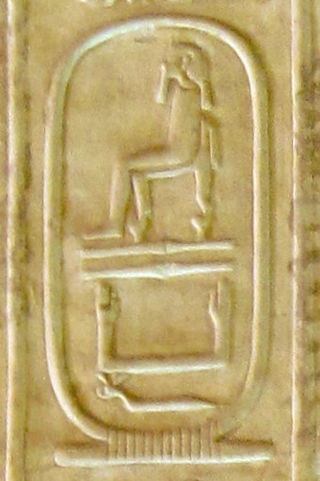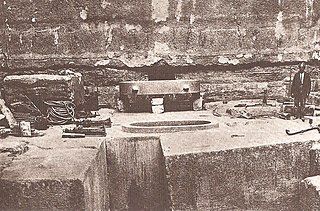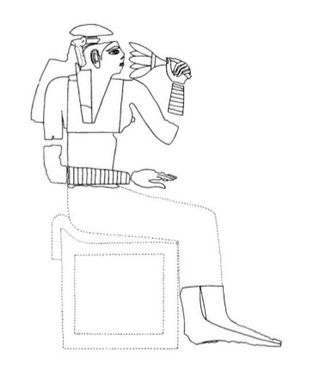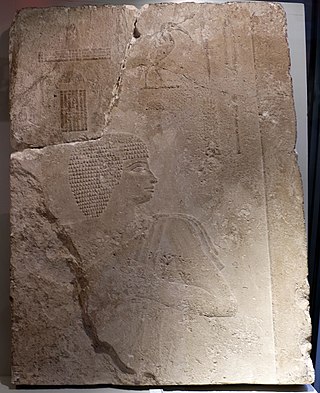| Name of owner | Title owner | Time period | Material | Comments |
|---|
| Heneni | Overseer and judge of scribes, sole companion, lector-priest | 6th dynasty | Stone mastaba | The tomb has three shafts and a chapel |
| Isu and Meshedu | ka-priests | 6th dynasty | Mud-brick mastaba | The tomb has nine shafts and a chapel |
| Itjef | Inspector of letter carriers | 6th dynasty | Mud-brick mastaba | The tomb has two shafts and three serdabs. ALso known as Junker No. 9 |
| Iymery | Royal wab-priest, inspector of royal document scribes of the treasury, inspector of scribes of the royal linen | 6th dynasty | Stone mastaba | The tomb has three shafts, a serdab, and a chapel. The tomb is just off the south of G I-S No. 3 |
| Khenut | Royal acquaintance | 6th dynasty | Stone mastaba | The tomb has two shafts, two serdabs, and a chapel. |
| Khnumnefer | Sole companion, keeper of the diadem, inspector of the king's hairdressers | 6th dynasty | Stone and brick mastaba | The tomb has two shafts, two serdabs, and a chapel. Also known as Junker No: S 46 |
| Seshemnefer IV | Director of the two thrones in the Mansion of Life, secretary of all secret commands of the king, chief of Bat | end of 5th to 6th dynasty (Unas to Teti) | Stone mastaba | Possibly identical with a man named Seshemnefer in G 5170, who was the eldest son of Seshemnefer III (owner of G 5170). Also known as Lepsius 53. Sons: Ptahetep, Neferseshemptah Sheshi, Seshemnefer Tjeti ?, Shetnu? |
| Hetepheres | Royal acquaintance, revered before her husband, priestess of Neith | end of 5th to 6th dynasty | Stone mastaba | Also known as Lepsius 54. The tomb is linked with Lepsius 53, the tomb of Seshemnefer IV |
| Niankhre | Inspector of physicians of the Great House, priest of Heka, priest of Horus-who-is-in-Shenwet, priest of Anubis-foremost-of-Sepa. | Late 5th to 6th dynasty | Stone mastaba | Also known as Lepsius 55. |
| Hor | | Saite Period | | Also known as Lepsius 101. |
| Udjahor Psametik-sasekhmet | | Saite Period | | Also known as Lepsius 102. |
| Neferherenptah | Royal sealer of the granary | Late 5th to 6th dynasty | Rock-cut tomb | A lintel mentions his wife Nefret, and his children Imgesi, Khuit, Kaemredwy and Keki. |
| Niankhhathor | | 6th dynasty | Stone Mastaba | The tomb contains 5 shafts and 2 serdabs. |
| Nishenu | ka-priest, keeper of the dockyard | 6th dynasty | Stone Mastaba | The tomb contains 3 shafts. Niankhhathor was the wife of Nishenu. |
| Nisusankh | Priest of Khufu, director of members of a phyle, inspector of wab-priests | 6th dynasty | Stone Mastaba | Nisuankh's wife was named Khenut, and his son Nisukhons |
| Niwehebre | | 26th dynasty | Rock-cut tomb | Niwehebre's name was found on his sarcophagus. |
| Ninutjer | | 6th dynasty | Stone Mastaba | Wife: Henutsen, Son: Nunetjer-nedjes, Daughter: Henutsen-nedjeset |
| Pedesi | | 26th dynasty | Rock-cut tomb | |
| Perniankh | Rower of the bark, administrator of the treasury, royal acquaintance | 6th dynasty | Rock-cut tomb | |
| Ptahhetep | Physician of the Great House, inspector of ka-priests | 6th dynasty | Rock-cut tomb | Probably son of Seshemnefer IV |
| Redenptah | | 5th–6th dynasty | Rock-cut tomb | Wife: Iymerit |
| Sehetepu Tepu | Judge, overseer of scribes | 5th–6th dynasty | Stone Mastab | Sehetepu Tepu appears several times in the chapel reliefs in the mastaba of Seshemnefer IV. Sons: Senedjemib Imesh, Khenu |
| Seshemnefer-Tjeti | Sole companion, director of the two thrones, chief of Bat | 6th dynasty | Stone Mastaba | Tomb may be part of family complex of Seshemnefer IV. |
| Tairy | | 26th dynasty | Rock-cut tomb | |
| Tjenti | | Late 5th to 6th dynasty | Rock-cut tomb | |
| Tjeri | | 26th dynasty | Stone Mastaba | |
| Tjetut | Royal acquaintance, beloved of her father | 6th dynasty | Stone Mastaba | |













